If you're like most busy homeowners, you want your indoor plants to tolerate substandard growing conditions and some neglect now and then. The umbrella plant, also known as schefflera, delivers on this.
I live in a subtropical climate in which night temperatures rarely dip below freezing, so for me schefflera is also a great choice for the outdoors. Or I can choose to move my plants outside in the spring and bring them back in when winter approaches. I actually have two large schefflera bushes that have been happily growing for years in containers. I loved the first one so much that after nine years I couldn't resist buying another.
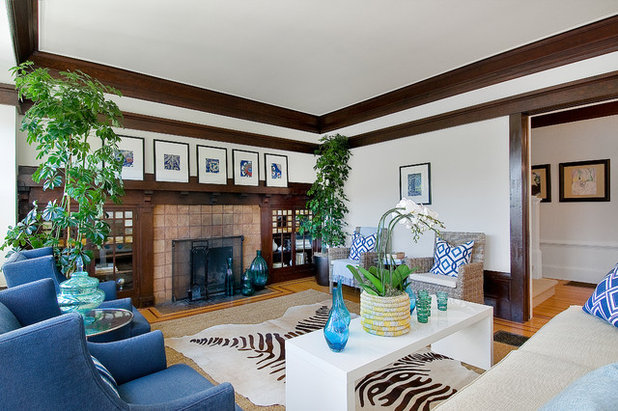
Tamara Mack Design
Schefflera is different in that it has leaves that are arranged in groups like spokes around a center point; they can be variegated or solid green. Additionally, there's also a dwarf schefflera, which is generally the variety sold as a houseplant.
While the dwarf version is similar in height to the standard schefflera
when raised
indoors
, there is a marked difference between the two as far as leaf size — the leaves of the dwarf schefflera are roughly half the size of the regular schefflera's. Outdoors and in the ground, the regular schefflera can reach a height of 40 feet, versus a maximum of 15 feet for the dwarf schefflera.
Two large plants are really not much harder to care for than one, so why not go for symmetry in a large space? The tall schefflera plants flanking the Arts and Crafts–style fireplace wall here add a nice green touch to the cheerful room, decorated with an eclectic beachy-jungle aesthetic owing to the faux zebra skin and blue accents reminiscent of the sea.
Note: Scheffleras can be on the tall and skinny side, so if you're looking for something bushy, don't be afraid to buy two plants and pot them together in one very large container.
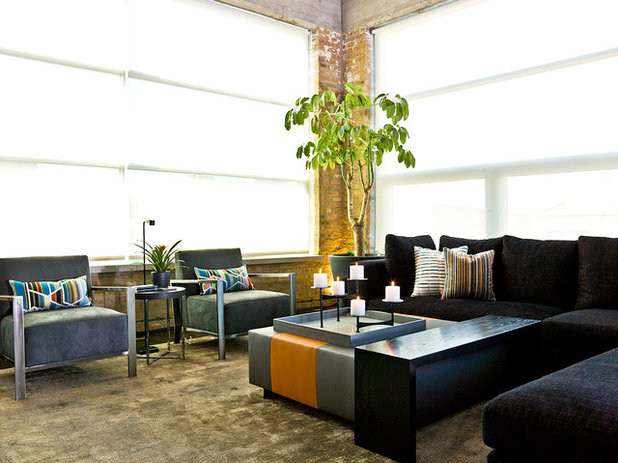
Cynthia Lynn Photography
Schefflera can be a bush or a tree. I like them both, but since an easy-to-care-for indoor tree is hard to find, you might try schefflera in its tree form. As you can see, the
tree isn't dense like a ficus, for example, but what it lacks in greenery it makes up for on account of its forgiving nature.
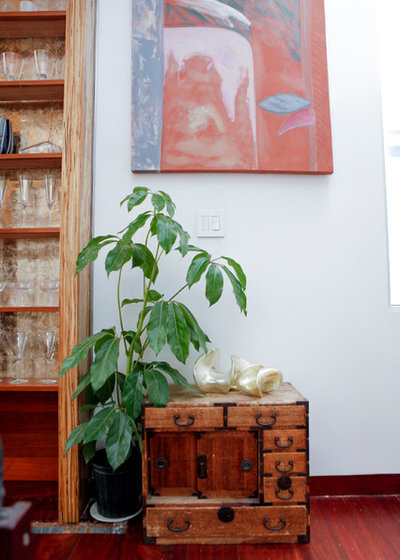
J Rich Design
A small schefflera makes a nice companion to this antique wooden chest and abstract painting. While I'm not personally a fan of combining red and green, green plants really do work well with red tones found in natural wooden furniture, a wooden floor or even decorative accents. Red and green are, after all, complementary colors.
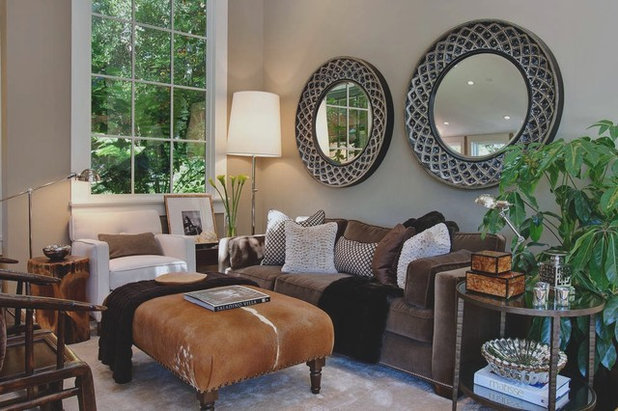
Urrutia Design
The schefflera in this cozy and tastefully decorated contemporary living room is just the right size to balance the lush greenery in the garden beyond and provide a fresh departure from all the brown tones in the room.
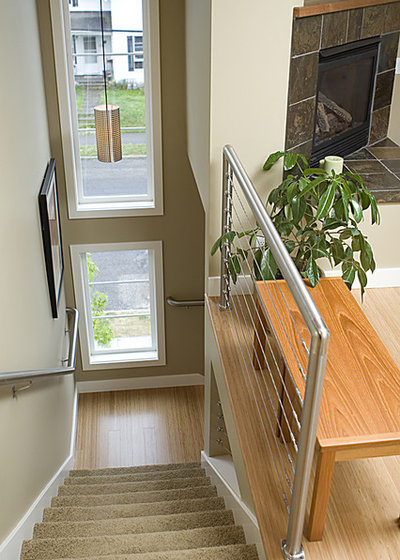
Logan's Hammer Building & Renovation
Schefflera makes a great small plant too; it is easy to care for and can be taken to the sink for watering. In a home with wooden floors, like this one, sink watering prevents damage to wooden floors from overflow.
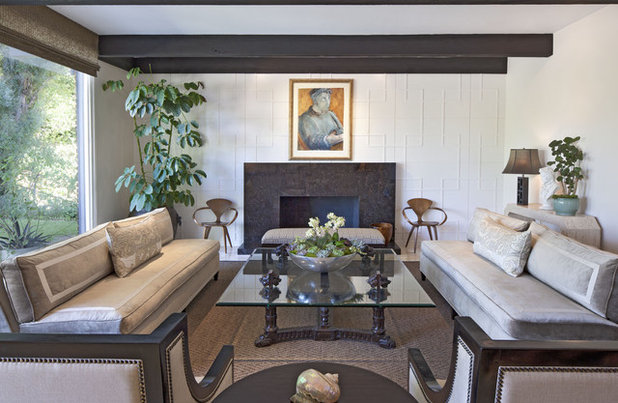
Dayna Katlin Interiors
A tall schefflera nicely fills the corner in this neutral-toned living room and blurs the line between indoors and out.
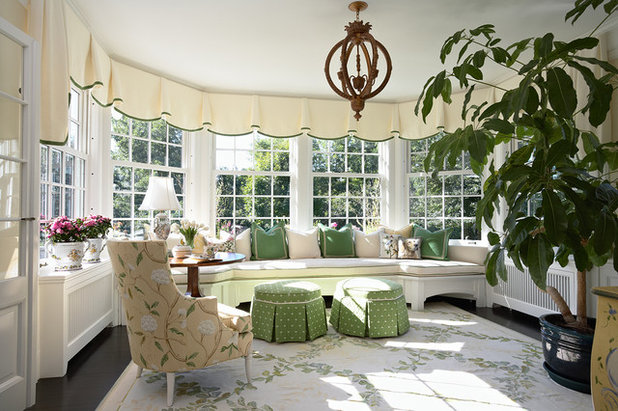
RLH Studio
A large schefflera
, with its relaxed silhouette
, lends a playful tropical air to this traditional sunroom.
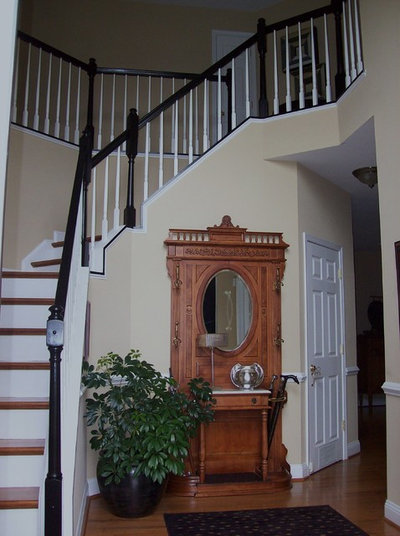
An entry foyer is an ideal spot for a large houseplant, and this schefflera appears to be thriving.
How to care for your schefflera:- Light: Bright diffused sunlight, but as a houseplant schefflera does not tolerate direct sunlight unless it is acclimated. In many tropical and subtropical regions, schefflera is a garden plant, in which case it can be fine in direct sun.
- Temperature: About 35 to 80 degrees Fahrenheit (2 to 27 degrees Celsius). If your climate rarely goes below freezing, feel free to move your schefflera outdoors.
- Water: Water thoroughly and allow the soil to dry out between waterings. Overwatering can cause root rot, so proper drainage is a must. Ideally you should set the plant on a saucer of stones to catch the runoff while keeping the roots dry and aiding in increased humidity from the evaporating water. Foliage that turns black is very likely a sign of overwatering, while foliage that begins to wrinkle is a sign of underwatering.
- Soil: Use well-draining potting soil.
- Feeding: Fertilizer is not necessary.
- Pruning: Schefflera can get leggy, so if you prefer a bush, prune it to maintain a compact shape. Schefflera bounces back even after a radical haircut, so don't be afraid to prune heavily.
- Pests: Schefflera is known to become easily infested with spider mites. If you spot infestation, the best nontoxic option is to make a soapy water solution and mist the plant with it at least once a week.
Other considerations:- Air purification: Known to be efficient in the removal of formaldehyde and benzene airborne toxins.
- Cautions: Schefflera are poisonous to people and animals if eaten. It is not often fatal if ingested, but will cause a burning sensation, swelling, difficulty swallowing and in severe cases difficulty in breathing.
- Native habitat: Taiwan and Hainan Island, China.
More: 8 Houseplants You Can't Kill





